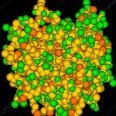FAQ and useful documents
-
Recently Browsing 0 members
- No registered users viewing this page.
-
Topics
-
-
Popular Contributors
-
-
Latest posts...
-
60
USA Trump's Fitness Test Revival: Push-Ups and Pull-Ups Are Back
The jury is out as to whether I am a leftist - many Americans seem to think I am some sort of a Maoist degenerate, conversely there are those from the UK who would hold that I consider Ghenghis Khan to have been soft on social policy! Anyway, back to the point, I feel knackered just reading your post! -
78
Friend in need of assistance
You mean ........these facts? So which part of 'Maximum of 3% renewal increase' didn't you understand. You have no right to preach facts to anyone. -
11
Thai - Cambodia Conflict Border Tensions: Hun Sen's Influence Remains Strong
Hun Sen is just another one of those Asian pieces of <deleted>, a complete and utter corrupt megalomaniac -
42
Has anyone been charged a service fee for a low account balance by a Thai bank?
SCB the min is 2,000 baht, Had the bank account 24 years.. there new policy re Apps means cannot use SCB App any more, to pay the monthly bills. so there was no movement this year, resaved a EMS letter 6 weeks ago stating as my balance was below 2,000 baht there was a weekly 200 baht FEE went to the Bank, the balance was 1,960 baht. less 2 x 200 baht FEE I was told 25 years ago at Bangkok Bank min balance was 2,000 baht - no idea if there are FEEs as account is used weekly/ HSBC min balance was 500,000 baht. if below there was a monthly FEE Yes 2 different months the balance dippd just below [late payment arriving] and had to pay the fee. -
35
Report Gripen Fighter Jet Deal Still Alive, Says Thai Air Force
So why did US refuse to sell F-35's to Thailand? Sweden's government simply follows the law of the country, as written. Plenty of countries out there are forced to buy US hardware, because they are under the boot of the USA. Pax Americana rules OK! -
16
-
-
Popular in The Pub








Recommended Posts